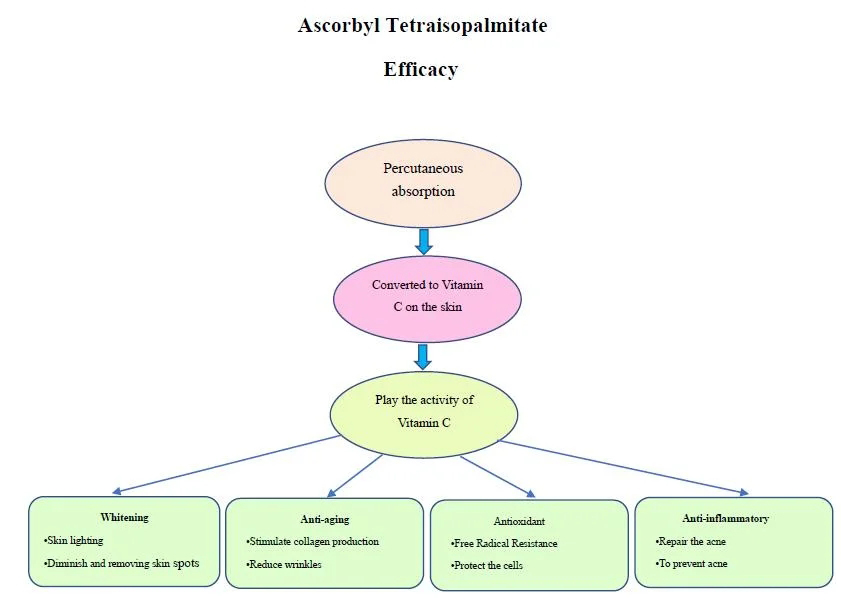Ascorbyl Tetraisopalmitate is an ester derivative of ascorbic acid (vitamin C) and is commonly used in cosmetic formulations due to its stability and skin benefits. It is synthesized by esterifying ascorbic acid with isopalmitic acid (or isopalmitate) using a chemical reaction that typically involves the use of a catalyst.
Here is a basic outline of the synthesis process:
Materials Needed:
- Ascorbic acid (vitamin C)
- Isopalmitic acid (4-isopropylpentanoic acid)
- Catalyst (usually a coupling agent like dicyclohexylcarbodiimide (DCC) or a carbodiimide-based reagent)
- Solvent (such as dimethylformamide (DMF) or dichloromethane)

Synthesis Steps:
- Activation of Isopalmitic Acid:
- The isopalmitic acid is first activated to form an acylating agent, often using a carbodiimide (such as DCC) to form an O-acylurea intermediate. This is done to make the carboxyl group of isopalmitic acid more reactive towards the hydroxyl group of ascorbic acid.
- Reaction with Ascorbic Acid:
- The activated isopalmitic acid is then reacted with ascorbic acid in the presence of a solvent. The reaction typically takes place under mild conditions (around room temperature) and may require stirring for several hours.
- Esterification:
- The hydroxyl group of the ascorbic acid reacts with the activated isopalmitic acid to form an ester bond, yielding Ascorbyl Tetraisopalmitate. This process involves the nucleophilic attack of the hydroxyl group on the carbonyl carbon of the isopalmitic acid.
- Purification:
- After the reaction is complete, the product is purified, usually by removing the solvent, washing the reaction mixture with water, and recrystallizing the compound or using chromatography to separate any unreacted starting materials.
- Characterization:
- The final product can be characterized using techniques such as NMR (Nuclear Magnetic Resonance), IR (Infrared Spectroscopy), and mass spectrometry to confirm the structure of Ascorbyl Tetraisopalmitate.

Key Considerations:
- Reaction Conditions: It’s important to control temperature and reaction time to prevent degradation of the sensitive ascorbic acid.
- Purity: Ensuring the purity of the final product is crucial for the efficacy of the cosmetic formulation.
- Catalyst Selection: The choice of catalyst (e.g., DCC or carbodiimide reagents) is critical to the success of the reaction and the formation of the ester.
Ascorbyl Tetraisopalmitate is considered more stable than free ascorbic acid and can be used in various topical applications, such as serums, to help brighten the skin and promote collagen production.
Does that help, or would you like more detail on any step?
